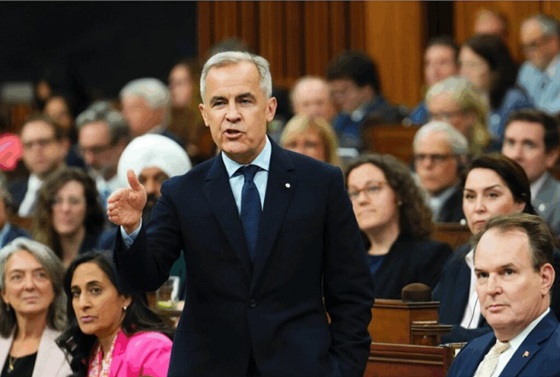Uncategorized
Argument at Chicago hospital erupts into deadly shooting

CHICAGO — An argument outside a Chicago hospital turned deadly when a man pulled out a gun and killed an emergency room doctor with whom he was having a domestic relationship, then ran into the hospital and fatally shot a pharmacy resident and a police officer, authorities said.
The attacker also died Monday but it was not clear if he took his own life or was killed by police at Mercy Hospital on the city’s South Side, Chicago Police Superintendent Eddie Johnson said.
Chicago “lost a doctor, pharmaceutical assistant and a police officer, all going about their day, all doing what they loved,” Mayor Rahm Emanuel said, fighting back tears. “This just tears at the soul of our city. It is the face and a consequence of evil.”
Mercy Hospital said the staff who died were Tamara O’Neal, 38, an emergency room physician who never worked on Sunday because of her religious faith, and Dayna Less, 25, a first year pharmacy resident who had recently graduated from Purdue University.
The slain officer was identified as Samuel Jimenez, 28, who joined the department in February 2017 and had recently completed his probationary period, Johnson said. Police said he was married and the father of three children.
The identity of the gunman was not immediately released.
The chain of events that led to the shooting began with an argument in the hospital parking lot involving the gunman and O’Neal, police said.
When a friend of O’Neal tried to intervene, “the offender lifted up his shirt and displayed a handgun,” Johnson said.
The friend ran into the hospital to call for help, and the gunfire began seconds later, with the attacker killing O’Neal.
After O’Neal fell to the ground, the gunman “stood over her and shot her three more times,” a witness named James Gray told reporters.
When officers arrived, the suspect fired at their squad car and then ran inside the hospital. The police gave chase.
Inside the medical
“We just don’t know how much damage he was prepared to do,” Johnson said, adding that Less “had nothing to do with nothing.”
Jennifer Eldridge was working in a hospital pharmacy when she heard three or four shots that seemed to come from outside. Within seconds, she barricaded the door, as called for in the building’s active shooter drills. Then there were six or seven more shots that sounded much closer, just outside the door.
“I could tell he was now inside the lobby. There was screaming,” she recalled.
The door jiggled, which Eldridge believed was the shooter trying to get in. Some 15 minutes later, she estimated, a SWAT team officer knocked at the door, came inside and led her away. She looked down and saw blood on the floor but no bodies.
“It may have been 15 minutes, but it seemed like an eternity,” she said.
Maria Correa hid under a desk, clutching her 4-month-old son, Angel, while the violence unfolded. Correa was in the waiting area of the hospital for her mother-in-law’s doctor appointment when a hospital employee told them to lock themselves in offices.
She lost track of how many shots she heard while under the desk “trying to protect her son” for 10 to 15 minutes.
“They were the worst minutes of our lives,” Correa said.
The death of Jimenez comes nine months after another member of the Chicago Police Department, Cmdr. Paul Bauer, was fatally shot while pursuing a suspect in the Loop business district.
Mercy has a rich history as the city’s first chartered hospital. It began in 1852, when the Sisters of Mercy religious group converted a rooming house. During the Civil War, the hospital treated both Union soldiers and Confederate prisoners of war, according to its
___
Associated Press Writer Michael Tarm contributed to this report.
___
For the latest developments in this story: https://apnews.com/b86560bd9fd8414eaf1927f686d03697 .
Amanda Seitz And Don Babwin, The Associated Press
Uncategorized
Cost of bureaucracy balloons 80 per cent in 10 years: Public Accounts

The cost of the bureaucracy increased by $6 billion last year, according to newly released numbers in Public Accounts disclosures. The Canadian Taxpayers Federation is calling on Prime Minister Mark Carney to immediately shrink the bureaucracy.
“The Public Accounts show the cost of the federal bureaucracy is out of control,” said Franco Terrazzano, CTF Federal Director. “Tinkering around the edges won’t cut it, Carney needs to take urgent action to shrink the bloated federal bureaucracy.”
The federal bureaucracy cost taxpayers $71.4 billion in 2024-25, according to the Public Accounts. The cost of the federal bureaucracy increased by $6 billion, or more than nine per cent, over the last year.
The federal bureaucracy cost taxpayers $39.6 billion in 2015-16, according to the Public Accounts. That means the cost of the federal bureaucracy increased 80 per cent over the last 10 years. The government added 99,000 extra bureaucrats between 2015-16 and 2024-25.
Half of Canadians say federal services have gotten worse since 2016, despite the massive increase in the federal bureaucracy, according to a Leger poll.
Not only has the size of the bureaucracy increased, the cost of consultants, contractors and outsourcing has increased as well. The government spent $23.1 billion on “professional and special services” last year, according to the Public Accounts. That’s an 11 per cent increase over the previous year. The government’s spending on professional and special services more than doubled since 2015-16.
“Taxpayers should not be paying way more for in-house government bureaucrats and way more for outside help,” Terrazzano said. “Mere promises to find minor savings in the federal bureaucracy won’t fix Canada’s finances.
“Taxpayers need Carney to take urgent action and significantly cut the number of bureaucrats now.”
Table: Cost of bureaucracy and professional and special services, Public Accounts
| Year | Bureaucracy | Professional and special services |
|
$71,369,677,000 |
$23,145,218,000 |
|
|
$65,326,643,000 |
$20,771,477,000 |
|
|
$56,467,851,000 |
$18,591,373,000 |
|
|
$60,676,243,000 |
$17,511,078,000 |
|
|
$52,984,272,000 |
$14,720,455,000 |
|
|
$46,349,166,000 |
$13,334,341,000 |
|
|
$46,131,628,000 |
$12,940,395,000 |
|
|
$45,262,821,000 |
$12,950,619,000 |
|
|
$38,909,594,000 |
$11,910,257,000 |
|
|
$39,616,656,000 |
$11,082,974,000 |
Uncategorized
Trump Admin Establishing Council To Make Buildings Beautiful Again


From the Daily Caller News Foundation
By Jason Hopkins
The Trump administration is creating a first-of-its-kind task force aimed at ushering in a new “Golden Age” of beautiful infrastructure across the U.S.
The Department of Transportation (DOT) will announce the establishment of the Beautifying Transportation Infrastructure Council (BTIC) on Thursday, the Daily Caller News Foundation exclusively learned. The BTIC seeks to advise Transportation Secretary Sean Duffy on design and policy ideas for key infrastructure projects, including highways, bridges and transit hubs.
“What happened to our country’s proud tradition of building great, big, beautiful things?” Duffy said in a statement shared with the DCNF. “It’s time the design for America’s latest infrastructure projects reflects our nation’s strength, pride, and promise.”
“We’re engaging the best and brightest minds in architectural design and engineering to make beautiful structures that move you and bring about a new Golden Age of Transportation,” Duffy continued.
Mini scoop – here is the DOT’s rollout of its Beautifying Transportation Infrastructure Council, which will be tasked with making our buildings beautiful again. pic.twitter.com/
9iV2xSxdJM — Jason Hopkins (@jasonhopkinsdc) October 23, 2025
The DOT is encouraging nominations of the country’s best architects, urban planners, artists and others to serve on the council, according to the department. While ensuring that efficiency and safety remain a top priority, the BTIC will provide guidance on projects that “enhance” public areas and develop aesthetic performance metrics.
The new council aligns with an executive order signed by President Donald Trump in August 2025 regarding infrastructure. The “Making Federal Architecture Beautiful Again” order calls for federal public buildings in the country to “respect regional architectural heritage” and aims to prevent federal construction projects from using modernist and brutalist architecture styles, instead returning to a classical style.
“The Founders, in line with great societies before them, attached great importance to Federal civic architecture,” Trump’s order stated. “They wanted America’s public buildings to inspire the American people and encourage civic virtue.”
“President George Washington and Secretary of State Thomas Jefferson consciously modeled the most important buildings in Washington, D.C., on the classical architecture of ancient Athens and Rome,” the order continued. “Because of their proven ability to meet these requirements, classical and traditional architecture are preferred modes of architectural design.”
The DOT invested millions in major infrastructure projects since Trump’s return to the White House. Duffy announced in August a $43 million transformation initiative of the New York Penn Station in New York City and in September unveiledmajor progress in the rehabilitation and modernization of Washington Union Station in Washington, D.C.
The BTIC will comprise up to 11 members who will serve two-year terms, with the chance to be reappointed, according to the DOT. The task force will meet biannually. The deadline for nominations will end Nov. 21.
-

 Digital ID11 hours ago
Digital ID11 hours agoCanada releases new digital ID app for personal documents despite privacy concerns
-

 Business21 hours ago
Business21 hours agoMajor tax changes in 2026: Report
-

 Censorship Industrial Complex19 hours ago
Censorship Industrial Complex19 hours agoDeath by a thousand clicks – government censorship of Canada’s internet
-

 Energy10 hours ago
Energy10 hours agoCanada’s sudden rediscovery of energy ambition has been greeted with a familiar charge: hypocrisy
-

 Alberta22 hours ago
Alberta22 hours agoSchools should go back to basics to mitigate effects of AI
-

 Daily Caller21 hours ago
Daily Caller21 hours agoChinese Billionaire Tried To Build US-Born Baby Empire As Overseas Elites Turn To American Surrogates
-

 Daily Caller21 hours ago
Daily Caller21 hours agoTwo states designate Muslim group as terrorist
-

 International20 hours ago
International20 hours agoRussia Now Open To Ukraine Joining EU, Officials Briefed On Peace Deal Say










